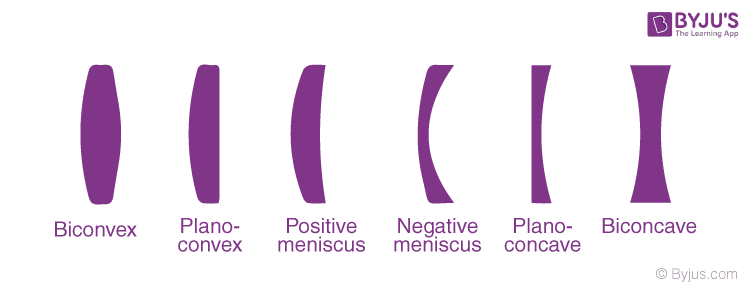| Table of Contents |
What Are Lenses?
A lens is a transmissive optical device that focuses or disperses light beams using refraction. A simple lens consists of a single piece of transparent material, while compound lenses consist of several simple lenses arranged along with a common axis. A lens can focus light to form an image, unlike a prism, which refracts light without focusing.
Mirrors Vs Lens
The most apparent distinction between mirrors and lenses is: that mirrors reflect light rays (light bounces back) while light rays are refracted (pass-through) through a lens. A mirror will have only one focal point, which is in front of the mirror. A lens has two focal points, each on either side. In the table below, let us look at more differences between mirror and lens.
|
A mirror is a glass surface with a silvery backing, that produces an image through reflection. |
A lens is a transparent substance of glass or plastic, bound by two surfaces, whose at least one surface is curved. |
|
It can either be plane or curved |
It is usually curved |
| The working principle of the mirror is the law of reflection |
The working principle of the mirror is the law of refraction |
In the next section, let us discuss the different types of lenses.
Types of Lenses
The lens classification depends on how the light rays bend when they pass through the lens. The two main types of lenses are:
- Convex Lens (Converging)
- Concave Lens (Diverging)
Convex lenses are thick in the middle and thinner at the edges. A concave lens is flat in the middle and thicker at the edges. A convex lens is also known as the converging lens as the light rays bend inwards and converge at a point which is known as focal length. On the other hand, the concave lens is also known as a diverging lens because it bends the parallel light rays outward and diverges them at the focal point.
Simple lens and compound lens are the two classifications of lenses. Simple lenses are different from compound lenses based on their surface of curvature. Following are the different types of simple lenses.

Compound lenses are those constructed out of a combination of different simple lenses. The lens types used to build a compound lens may have different refractive indices and other properties. The placement of lenses are such that they lie on a single axis, and properties like focal length are calculated again for the new compound lens.
Other Lens Types are:
- Cylindrical – curvature in one direction
- Fresnel – narrow ring-like surface
- Lenticular – a group of micro-lenses
- Gradient Index – flat surfaces but with varying refractive indices
- Axicon – conical surface
Interested to learn more about the lens, below are the links:
What if we need to find out the exact position of an image with respect to the lens’ position? Do we need to draw a diagram every time? This video defines the Lens Formula, Magnification and Power for lenses and how simple math can be used to make life easy. It also expands on concepts taught in previous classes and defines the power of a lens.

Read More: Types of Lenses
Applications Of Lens
What do magnifying lenses, your eye, and binoculars have in common? They all use convex lenses. And have any of you wondered why people look so weird when seeing them through a peephole? That’s because the glass used there isn’t a normal one. It is a concave lens. Convex lenses are used to correct farsighted vision problems.
Similarly, concave lenses are used to correct nearsightedness. Compound microscopes and telescopes use both convex and concave lenses. Using combinations of convex lenses may create blurry images. A concave eyepiece is used to correct this problem. Even in cameras, at times, a combination of concave and convex lenses is used. The use of concave lenses is essential in lasers. The actual light ray is particular, which may damage equipment where it is used (like CDs and scanners). The diverging lens rectifies this issue. Concave lenses also apply in flashlights where the light beam diverges for broader coverage.
Read More: Convex Lenses
Frequently Asked Questions – FAQs
What is optics?
What is a lens?
What are the main two types of lenses?
What is the main difference between a lens and a mirror?
What are the important uses of lenses?
Watch the video and understand the concepts of Lens Formula, Magnification and Power of Lens Class 10

Learn about lenses and their real-life applications with experienced tutors here at BYJU’S.

Nice